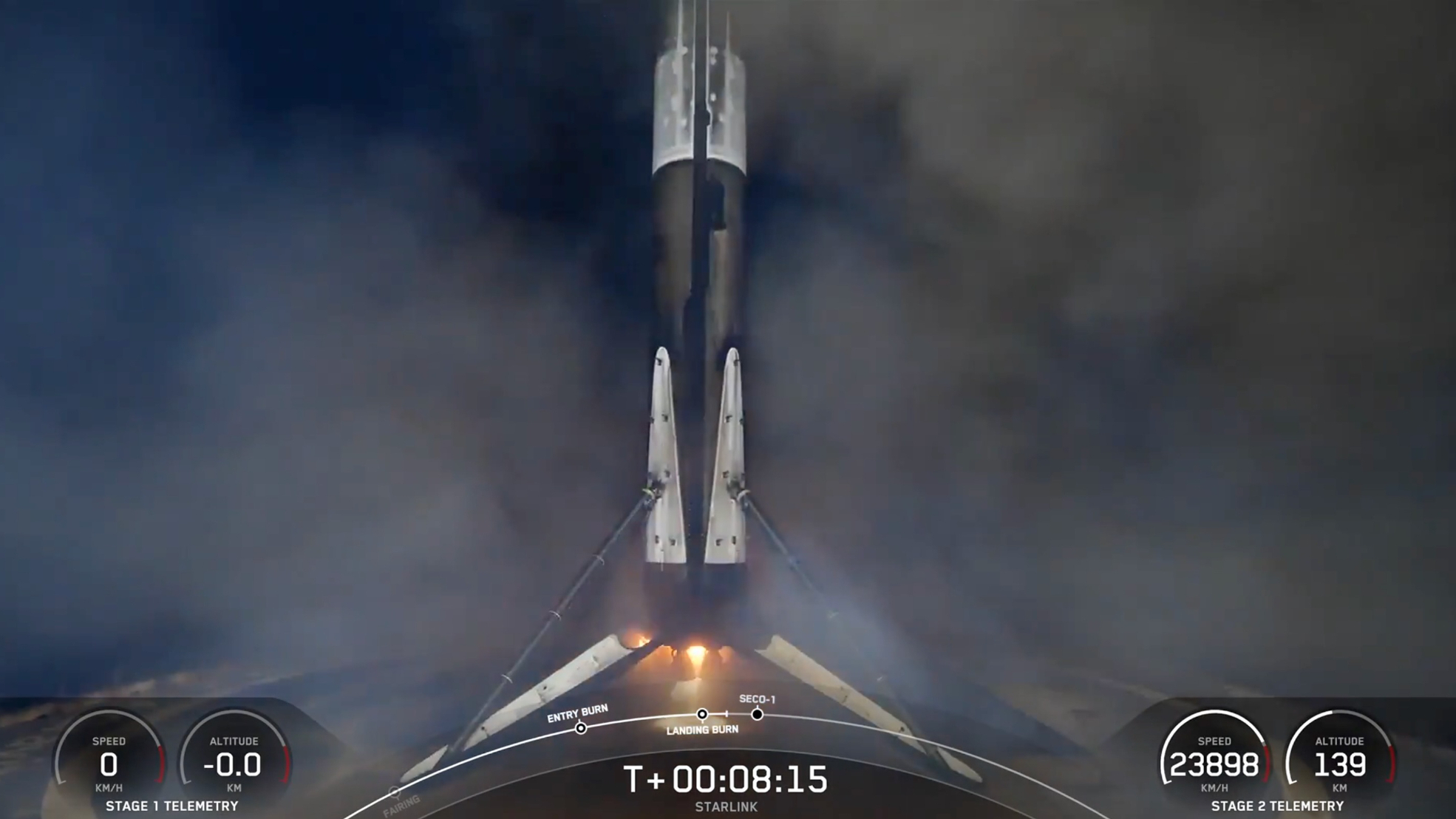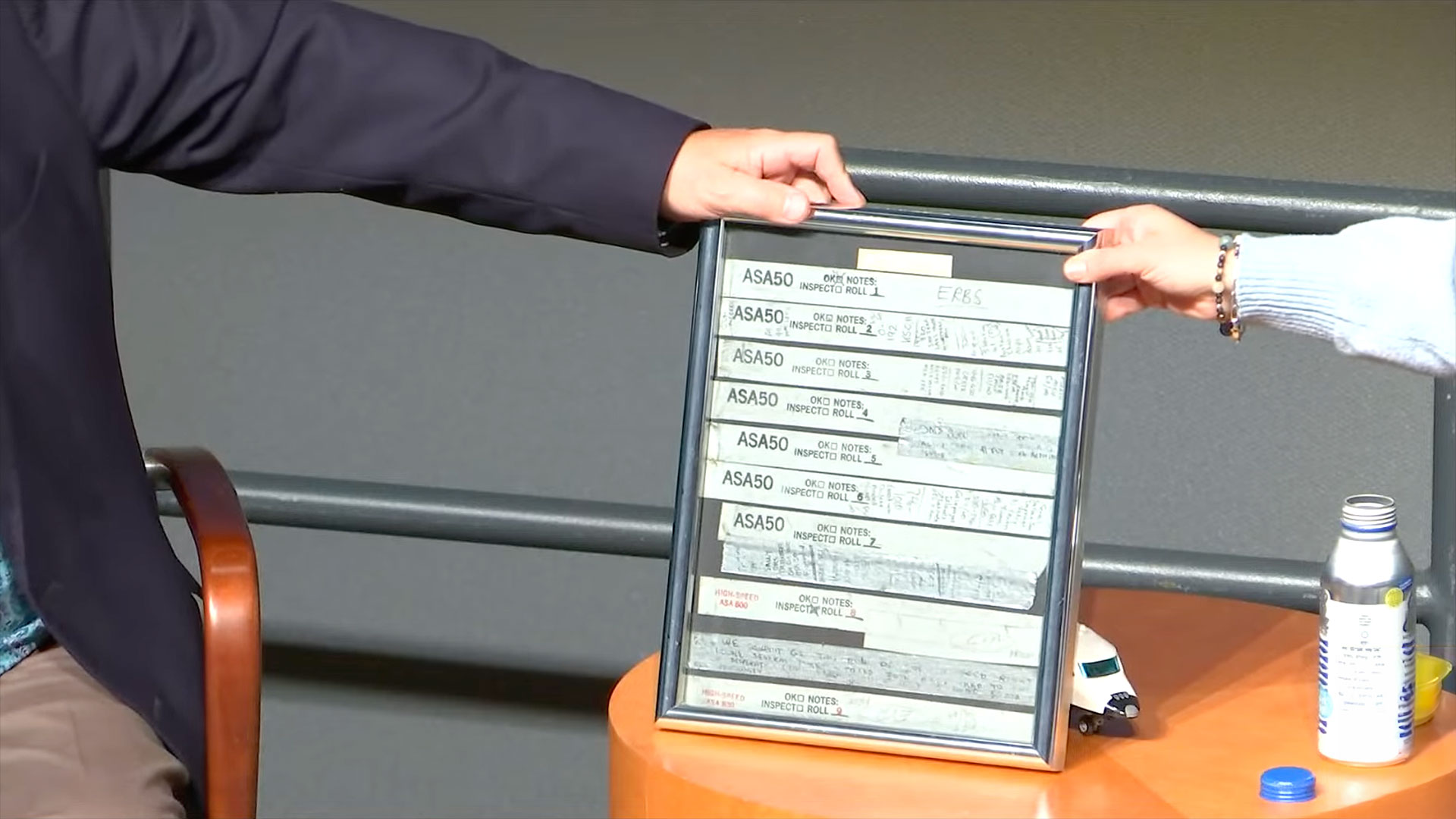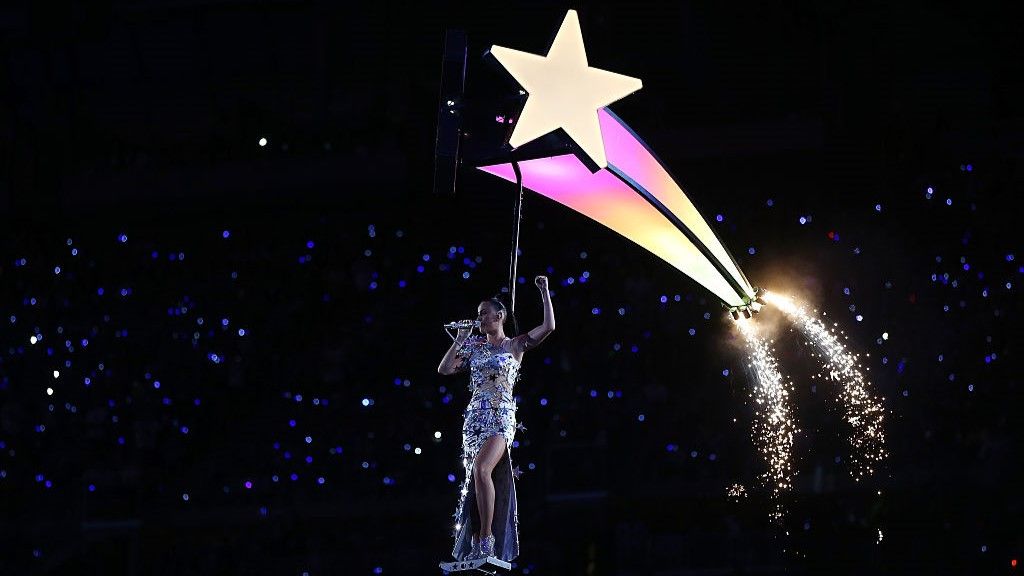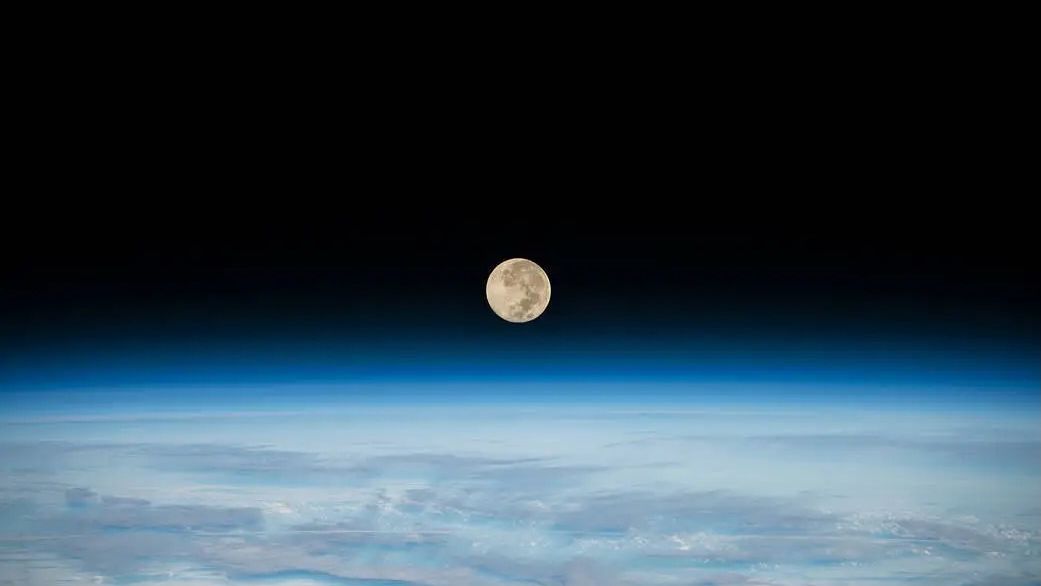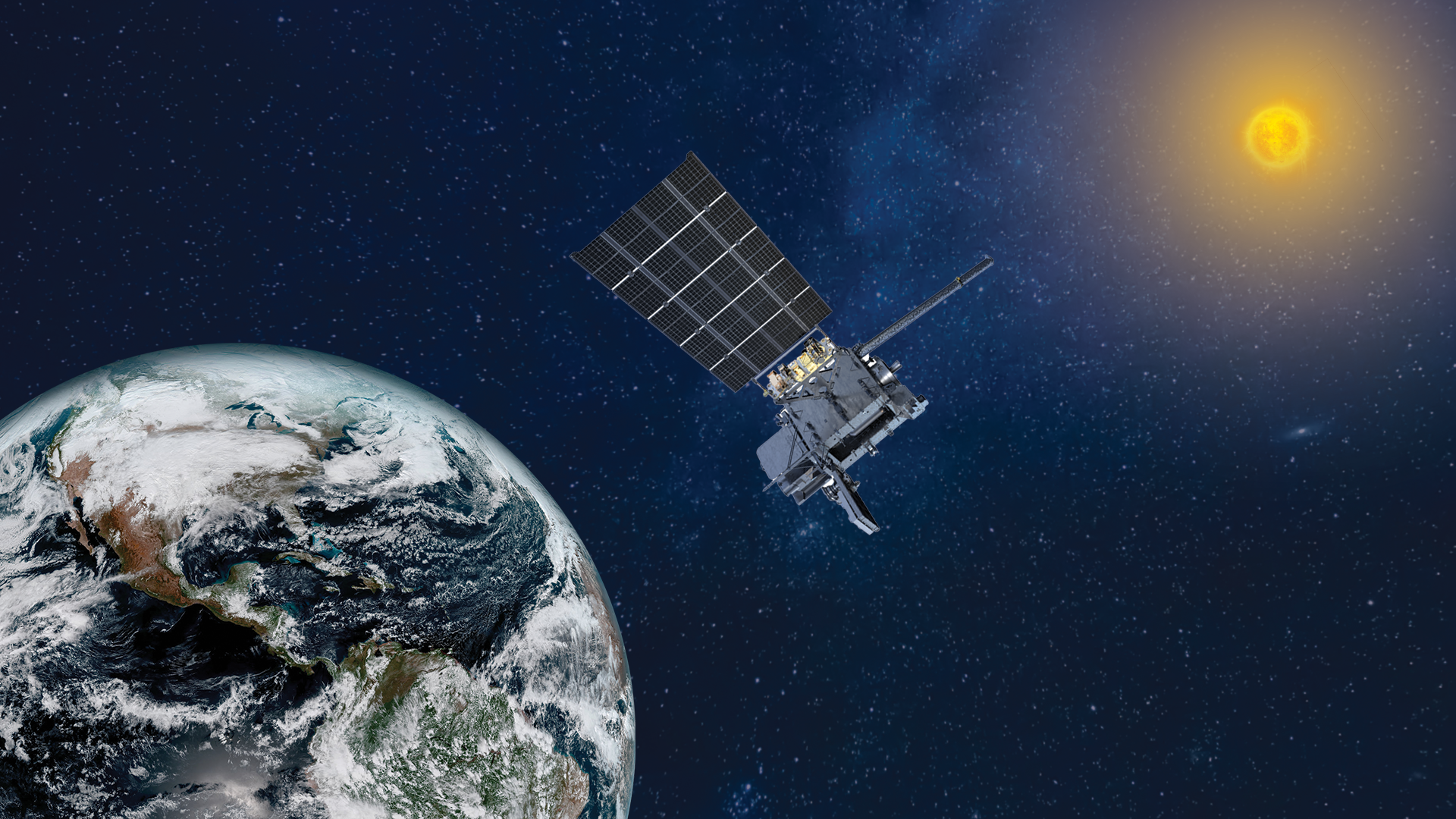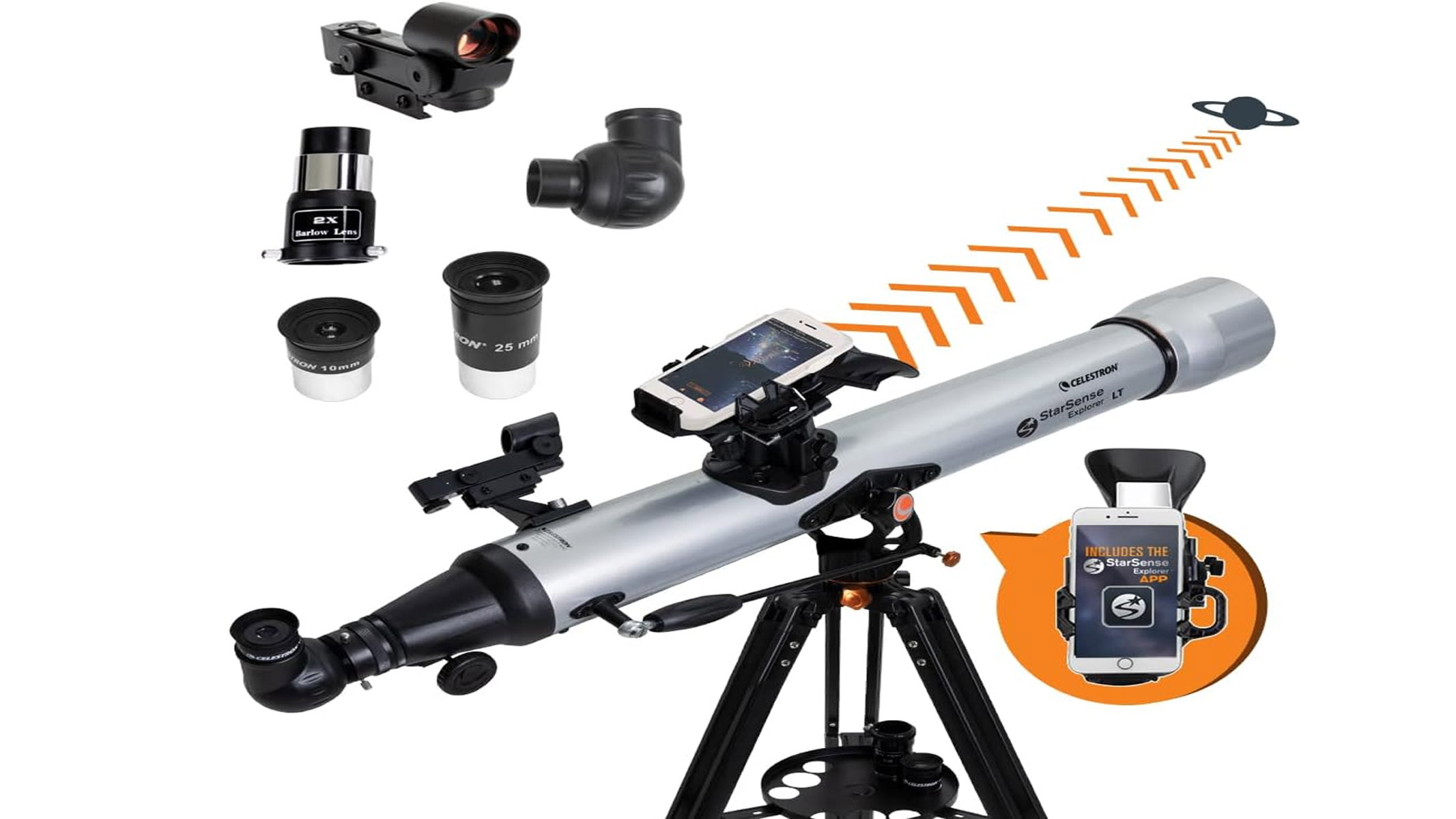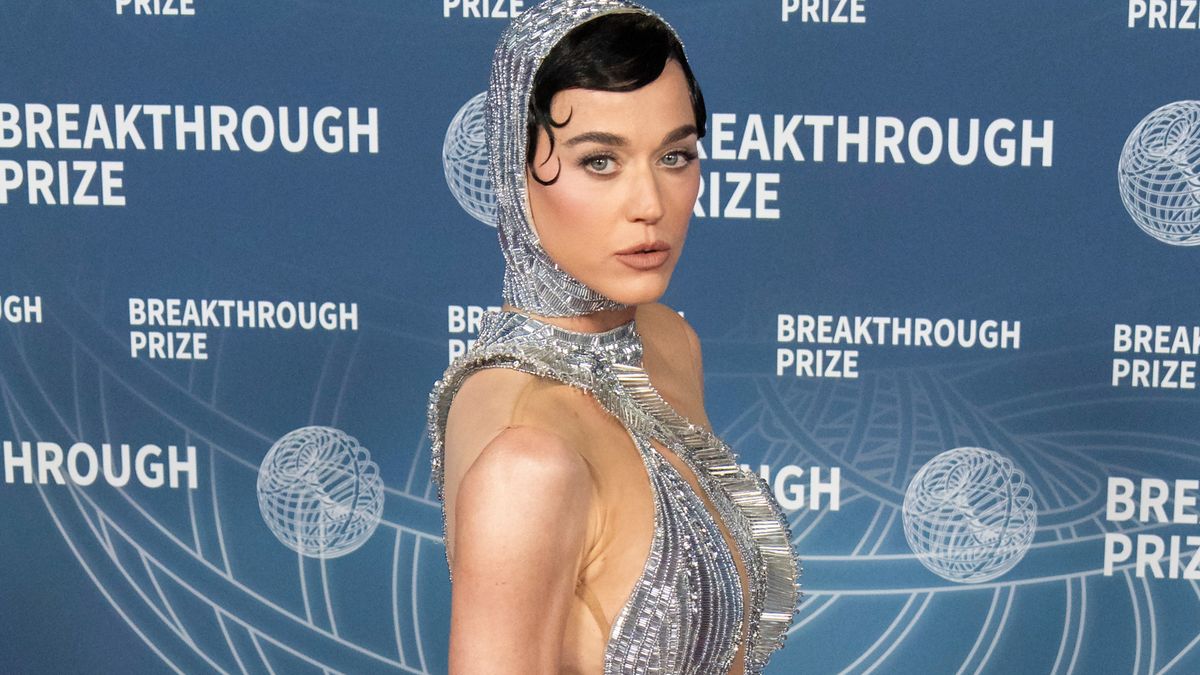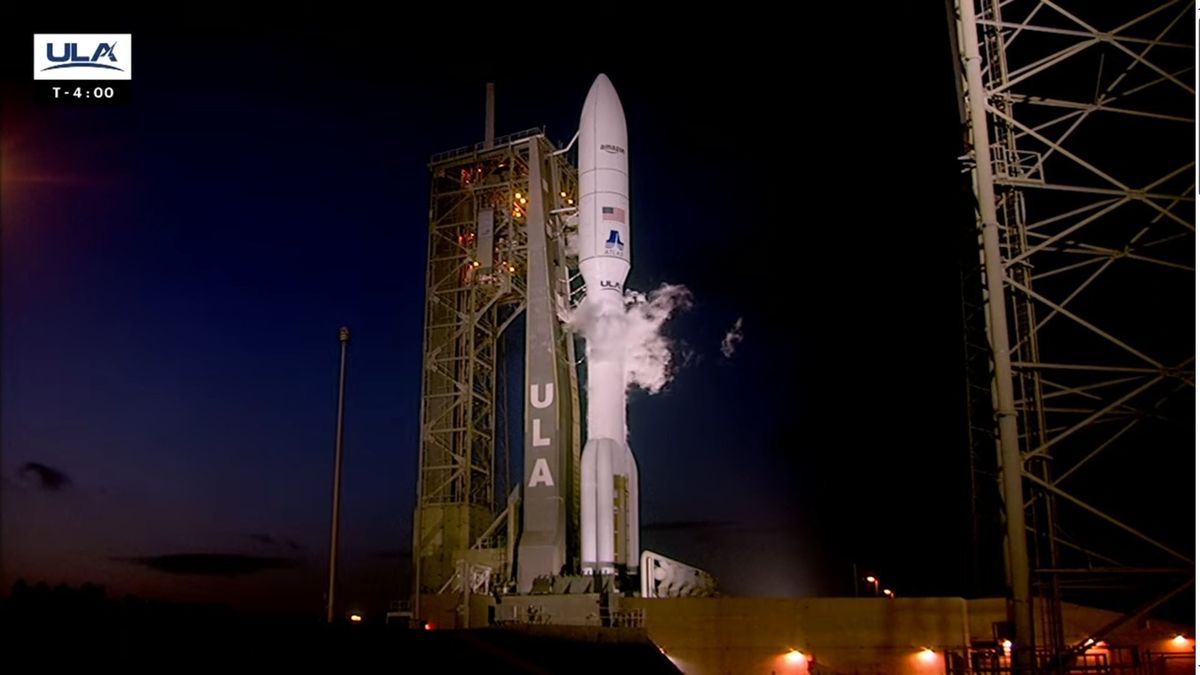Another batch of Starlink wireless internet satellites is in orbit after a full moon-lit SpaceX launch from Florida. A SpaceX Falcon 9 rocket launched the Starlink 12-17 mission Saturday night (April 12) from NASA’s Kennedy Space Center (KSC). The Falcon 9 lifted off from KSC’s historic Launch Complex-39A at 8:53 p.m. EDT (0053 on April 13 GMT), carrying a stack of 21 Starlink satellites toward low Earth orbit (LEO). The Falcon 9 rests on the deck of a drone ship at sea shortly after its touchdown on April 12, 2025.…
Read MoreCategory: The Moon
Our moon
‘The Dream is [still] Alive’: First IMAX film shot in space at 40 years
James Neihouse had one more thing to share. From inside a tote bag, he pulled out a chrome frame displaying 11 strips of tape, each of which had printed text and handwritten notes. These were labels removed from film cans, the award-winning cinematographer explained. But not just from any film — these were the 41-year-old labels from the third space shuttle mission to carry an IMAX camera into Earth orbit. The rolls were used in the making of the first movie to include scenes shot in space, as first released…
Read More‘I’m really excited about the engineering of it all.’ Katy Perry is psyched for her Blue Origin launch on April 14
Katy Perry is about to blast off like a firework on her Blue Origin rocket launch this Monday. Blue Origin will launch its eleventh crewed flight on April 14, with pop star Katy Perry strapping into the New Shepard space capsule alongside five other passengers, all of them women. The mission, NS-31, will be the first all-female crew since the Soviet Union’s Valentina Tereshkova became the first woman in space during a solo flight in 1963. “Im really excited about the engineering of it all,” Perry told the Associated Press,…
Read MoreEaster is coming late in 2025, astronomically speaking. Here’s why
Saturday night (April 12) brings us the April full moon, which traditionally is known as the “Pink Full Moon.” The Native Americans who once occupied the northern and eastern United States kept track of the seasons by attaching distinctive names to each full moon that occurred at approximate 29-day intervals during the course of the year The “Pink Moon” name is rather deceptive, however, because it might initially give some the idea that on that particular night the full moon will appear to glow with a pinkish or salmon hue.…
Read MoreThe newest GOES weather satellite in NOAA’s fleet is now fully operational (video)
The final satellite in NOAA’s GOES-R weather satellite series has a new place in orbit … and a new name. The GOES-19 weather satellite, which launched into orbit in June 2024, has officially taken the place of its predecessor GOES-16 to watch over the Western Hemisphere from its perch 22,236 miles (35,785 kilometers) above us. To mark the milestone, the satellite has the new name of GOES East to serve as the dominant geostationary satellite in the fleet, NOAA officials said in a statement. “With GOES-19 now in operation, NOAA…
Read MoreAuroras could spice up April’s Full Pink ‘micromoon’ this weekend
Aurora chasers and night sky enthusiasts get ready – the stars could align for you to have quite the cosmic show this weekend! We already told you that this month’s Full Pink ‘micromoon’ is scheduled to rise on Saturday (April 12), getting to its fullest point at 8:22 p.m. EDT (0022 GMT April 13). If you’re not familiar, unlike the powerful and larger-than-life supermoon that we will get to experience later this year, a micromoon is actually the opposite. This is when the moon will be located the farthest away…
Read MoreNASA spacecraft spots monster black hole bursting with X-rays ‘releasing a hundred times more energy than we have seen elsewhere’
We’ve all woken up in a terrible mood from time to time, but a newly observed monster black hole is really having a bad day. The previously inactive supermassive black hole at the heart of the galaxy SDSS1335+0728, located about 300 million light-years away from us, was seen erupting with the longest and most powerful X-ray blasts ever seen from such a cosmic titan. This active phase marks the start of the supermassive black hole devouring matter around it and erupting with short-lived flaring events called quasiperiodic eruptions (QPEs). The…
Read MoreSave a massive 30% on the Celestron StarSense Explorer LT 80AZ, a top-tier beginner telescope
If you’re looking to try your hand at astronomy, or you want a small telescope with a quality build to view upcoming night sky events, like the Lyrid Meteor Shower, then you might want to consider getting 30% off the Celestron StarSense Explorer LT 80AZ. Save 30% on the Celestron StarSense Explorer LT 80Z when you grab it from Amazon and apply the extra $10 coupon. A 30% discount equates to a saving of $70 and that’s ideal for those looking for a top-tier beginner telescope and to start off…
Read MoreBlue Origin’s all-female spaceflight urges women to shoot for the stars — but astronaut memoirs reveal the cost of being exceptional
This article was originally published at The Conversation. The publication contributed the article to Space.com’s Expert Voices: Op-Ed & Insights. Jasleen Chana is a PhD candidate at UCL in the department of Science and Technology Studies. For the first time since Russian cosmonaut Valentina Tereshkova’s solo flight in 1963, a spacecraft will fly with only women aboard. Blue Origin’s all-female spaceflight crew, which includes pop star Katy Perry, is set to take off this spring. You may like Jeff Bezos’ crew is assembled from successful and well-known women, also including…
Read MoreLaunch of Amazon’s 1st Kuiper internet satellites delayed by bad weather
Amazon may be a whiz at fast online deliveries, but the massive company will have to wait to launch the first satellites of its new space internet constellation after bad weather thwarted a liftoff on Wednesday night. A United Launch Alliance Atlas V rocket attempted to launch 27 of Amazon’s first Project Kuiper internet satellites to orbit from Florida’s Cape Canaveral Space Force Station on April 9, but persistent clouds near the pad violated launch rules, ULA officials said. “It is confirmed that we will not continue with the Amazon…
Read More